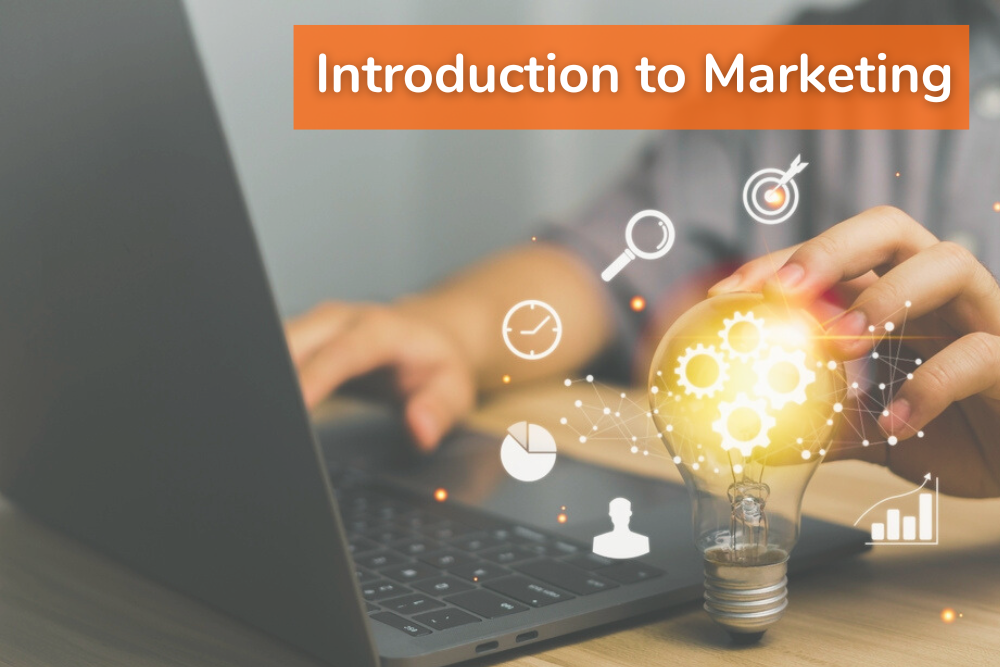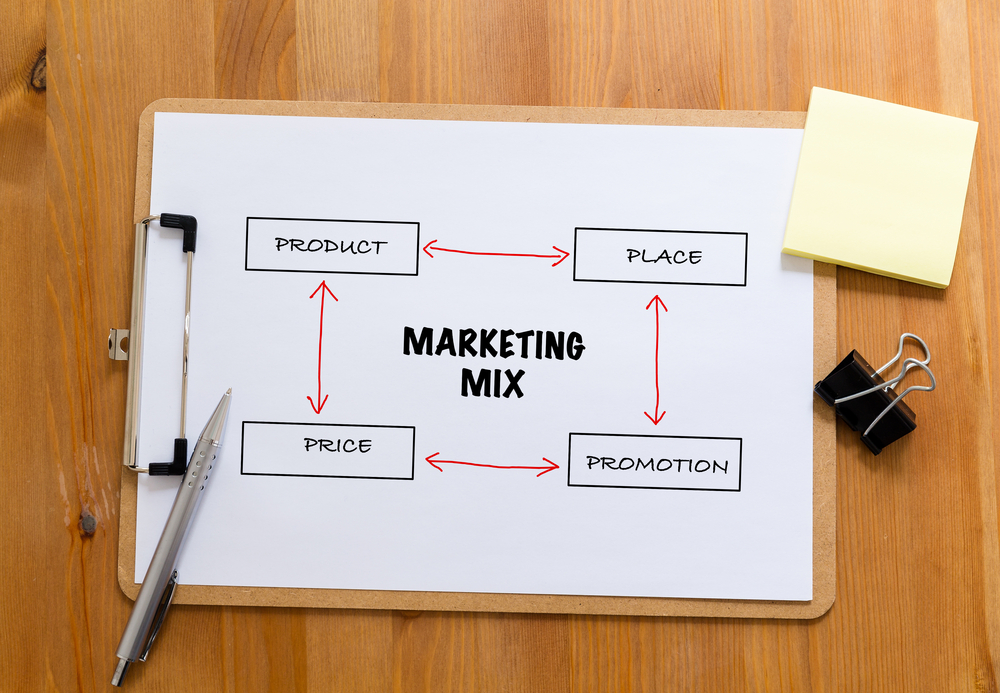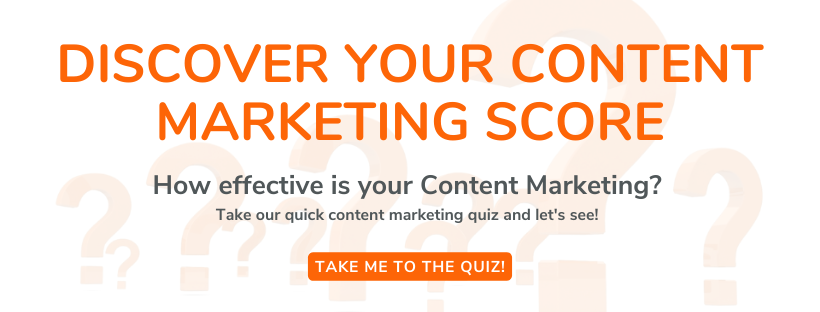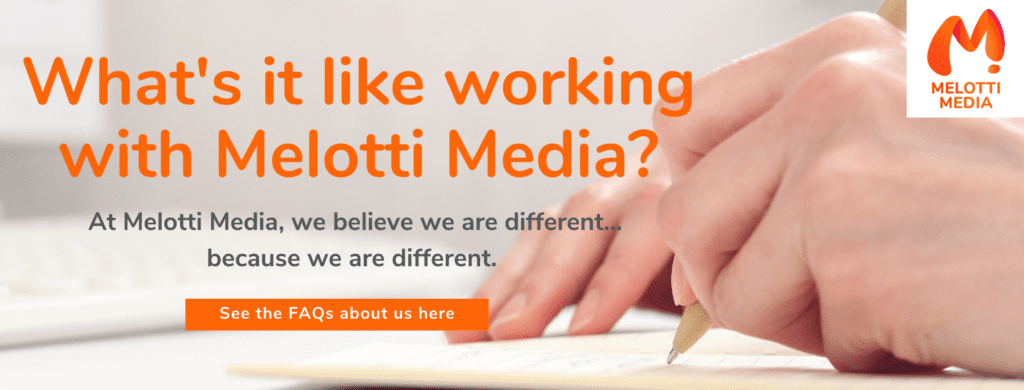
Marketing: What is It?
Basically put, marketing is the process of meeting a customer’s need for gain or trade – usually profit in the context of most business organisations.
Of course, this is a basic definition of marketing, as it involves many steps and can vary from organisation to organisation, consumer to consumer, market to market and so on.

The Marketing Cycle
The process of marketing revolves around a few different aspects which act as a continuous cycle.
- Firstly, there is a need, want or demand by consumers which, in turn, creates a market.
- This market is then evaluated for its potential, and an organisation creates a solution to it in the form of a product.
- A solution is designed and developed with specific features that satisfy the market’s requirements to a certain extent, thus creating value.
- An exchange takes place and then the process repeats.
Consumer Choice and Value
Marketing directly affects the way a consumer judges the value of a product and the level of customer satisfaction they receive.
Value
Just because an organisation creates a product to meet a market’s need, doesn’t mean it’s the only one, nor is it the best or worst. All consumers judge the value of a product, both before and after the purchase.
As stated above, marketing is based on an exchange or trade: this means that a consumer parts with something for the product in question.
This ‘parting’ gives the consumer the ability to judge the value and the level of satisfaction they experience.
It’s important to remember that the trade doesn’t always solely involve money. Of course, the majority of products are paid for with money. However, there are other costs (such as time) that also go into the transaction.
Customer value can be calculated, conceptually, by dividing total benefits by total costs.
Total benefits include all of the tangible, physical gains of a product (known as the functional benefits), as well as the emotional benefits that go with the purchase.
For example, a new pair of jeans provides the functional benefit of clothing and comfort, and the emotional benefit of being fashionable and making the wearer feel good.
Total costs include the obvious monetary cost, but also costs of the consumer’s time, energy and even emotion. If a consumer is stressed about a purchase, this would be considered an emotional or mental cost.

Therefore, the benefits divided by the costs gives a consumer’s value of the entire product purchasing experience.
Of course, not all of these turn out positive.
The consumer may want the product, but if they believe the monetary or time cost was too high – outweighing the benefits gained – they will value the product very low.
- Consumers often experience what is known as the ‘turmoil of the purchase’ which is the cost they experience in acquiring the product, whether that be frustration with queues in a store or not having the correct size, and so on.
- ‘Buyer’s remorse’ is the emotional conflict that a customer experiences after the purchase where they start to analyse whether there was enough value to justify their purchase.
The best marketing strategy is to always reassure the consumer and create enough value for them to never associate these kinds of feelings with your product.
A good example is the Harley Davidson motorcycle.
There are many different alternatives to motorbikes on the market that are more powerful and cheaper.
However, the brand Harley Davidson still presents a lot of value to a certain group of avid motorcyclists – simply because the brand carries more weight than the functional benefit.
The customer gains more value from the prestige and image that the brand represents.

Customer Satisfaction
How expectations are met dictates the level of customer satisfaction in relation to a product.
If a product over-delivers in comparison to what a consumer expected, satisfaction will be very high. The opposite is true of a low level of satisfaction.
Marketing aims to ensure that customer satisfaction is high and the product has a positive reputation in the market place. After all, the resulting repeat purchase of a happy customer, as well as the positive word-of-mouth is very profitable for the business.
The market place is forever increasing customers’ expectations with the rapid evolution of technology, competitors and social media.
Modern marketing is not just the creation and delivery of the right product: it’s also about managing expectations.
A product will never please everyone, and it’s important to ensure the greatest satisfaction within reasonable confines.
Check: 8 Ways to Step Up Your Customer Service with Effective Marketing and Copywriting
Relationship Marketing
Managing value and customer satisfaction has created what is known as customer relationship marketing, sometimes shortened to CRM.
This basically means that organisations view the consumer as the ultimate judge of their product, and therefore, creating a good relationship whilst satisfying their needs leads to customer loyalty: a goal, all good marketers strive for.
Retaining customers in a market is a key driver in organisational success. Losing customers results in less demand for a product and significant financial loss.
Often, an organisation will encourage feedback, especially complaints, as this means that they can evaluate the weaknesses in their offering and attempt to employ a recovery strategy to retain the customer.
It has been shown that making a mistake and then correcting it, be that via an apology, a refund or sending free stock, etc., can greatly increase customer loyalty.
With the rise of social media, bad feedback can reach further than ever before. Employing a customer recovery strategy can result to avoiding significant losses associated.
For more, read: The Importance of Online Customer Reviews in Your Business’ Marketing

The Evolution of Marketing
Basically, the modern practices and concepts of marketing and promotion began roughly in the 1960s to 1970s. From that time to now, the view on marketing has shifted and evolved.
The first philosophy was called the production concept.
It focused on mass production of products and selling them to a market as is.
However, organisations started to discover that just one product didn’t always fit the demands of a versatile group of consumers.
This is how the product concept developed.
Product concept centred on differentiating a product’s features.
Following this came the selling concept.
It revolved around utilising promotion and a sales force to drive sales through communication with the market.
The next step diversified marketing further, which, funnily enough, was called the marketing concept.
This involved conducting business through:
- connecting far better with consumers, segmenting the marketing,
- investigating their individual needs
- and maximising consumer value and customer satisfaction by tailoring the product to match, setting an appropriate price, communicating effectively and ensuring delivery was convenient.
It was a very internally focused concept and was extremely effective, employed by most organisations even today.
Basically, the marketing concept put the consumer first, and answered them with production, selling and product concepts, rather than the other way around.
There is one last stage – the societal concept.
Whilst not all organisations do this, the benefits of an organisation that focuses on what’s known as the societal concept are quite high.
This is basically taking the above marketing concept and adding a socially responsible aspect to it.
The societal concept looks externally and not just internally within an organisation.
For example, products can be environmentally friendly, contribute to charities, sponsor events and so on that benefit the larger community.
It revolves around making profit by simultaneously satisfying consumers and acting in a way that benefits society.
The positive repercussions of this can be very beneficial for an organisation as consumers seek more from them than just a good product.
Have a read: Is Corporate Social Responsibility Beneficial for Your Brand?

The Marketing Mix
Here it comes: the obligatory main Ps of marketing.
Considered by some to be slightly outdated, the four Ps are the real pillars of all marketing practices: Price, Product, Promotion and Place.
However, a fifth P: Positioning, is often added to this marketing mix.
- Price refers simply to the cost of the product. As already mentioned, this is monetary cost, as well as other costs such as time.
- Product revolves around all attributes of the offering that are created by an organisation to satisfy their needs.
- Promotion is about the communication techniques that educate and persuade customers to be interested in the product.
- Place, also known as distribution, involves the logistical practices employed in bringing the product to the consumer.
- Positioning refers to the marketing technique of where your product sits in the market and how it is viewed by consumers.

When the product is an intangible service, there are three additional Marketing Ps that are added to the marketing mix: People, Process and Physical Evidence.
- People refer to the human element of the service being carried out, such as relationships, personability, experience and expertise.
- Process is exactly what it sounds like: the steps involved in carrying out the service to produce a gain for the customer.
- Physical Evidence is the associated tangibles that the consumer will experience during the service that have an impact on how a consumer rates the service. For example, the way a lawyer dresses or the quality of the tools a builder uses.
The Wholistic Marketing Approach
Also spelled ‘holistic’, this approach suggests that a perfect marketing organisation unites the four key elements in one united operation:
- The Marketing Mix (the Marketing Ps, above),
- Customer Relationship Marketing (CRM),
- Internal Employee Satisfaction
- and the external Societal Marketing Concept.
By conducting organisational operations with these four elements, a business ensures the greatest potential for success and profit.
How Does Marketing Do This?
The marketing function of an organisation lends itself heavily to how successful an organisation is.
This is because the marketing function investigates the current position, develops strategies, formulates tactics and executes actions that all produce the benefits an organisation strives for.
What is a Marketing Plan?
A marketing plan is a living document that outlines marketing’s analysis and proposed efforts over a particular time frame in achieving organisational success.
It involves the following elements.
Overview and Executive Summary
As the title suggests, the first section is a quick snap-shot of the entire marketing plan that will follow this section.
Current Position
This section outlines everything to do with the organisations position as it stands currently, both internally and externally. It analyses the current market and its trends, current competitors, all external related environments as well the organisation’s strengths, weaknesses, opportunities and threats.
Objectives
The range of goals are outlined here, which can include financial goals as well as marketing goals, such as greater share-of-voice, market share, reputation, etc.
Strategy
The proposed approach that will be taken in order to answer each objective.
Tactics/ Action Plan
Detailed explanations of executable steps of the strategy that will deliver results to achieve the objectives.
Projected Performance
Forecasted results of each deliverable
Control and Evaluation
This section details how the entire plan will be monitored.
I hope this basic introduction has helped you understand the basics of Marketing! Keep following my blog for more informative posts, and feel free to comment!
How can Melotti Media Help You?
For ongoing business longevity, you need quality ideas, fresh concepts and innovative suggestions. However, we understand that this is easier said than done.
You’re time-poor and spread thin, and this may not be your area of expertise. So, let us help you by coming together and getting those creative business ideas flowing.
For more information or to speak to an innovative Marketing Consultant to help get the results your business deserves, contact your trusted specialists at Melotti Media today.
To speak to your trusted message marketers and copywriters, email us at enquire@melottimedia.com.au or phone 1800 663 342.
We can sharpen your words to achieve your goals today!
The Melotti Media Team
Melotti Media | Copywriting & Message Marketing Bureau
www.melottimedia.com.au









